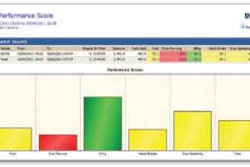Cross-border trucking: Why all the fuss?

When the last cross-border trucking demonstration project between the United States and Mexico was announced in 2007, it was met with fierce opposition from some industry groups claiming thousands of U.S. driver jobs would be lost, the safety of the U.S. motoring public would be jeopardized and that Mexican carriers would haul domestic freight illegally. Despite the gripes, the program ran for more than one and a half years before federal funding was pulled and the pilot program came to a screeching halt in March 2009.
By the time the dust had settled, it turned out that many of the fears from the program’s opponents weren’t realized. Whether due to a lack of interest or to regulatory hurdles, only 29 of a projected 100 Mexican carriers were granted provisional operating authority during the first year of the program, and two carriers withdrew from the program after being admitted. During that time, only 118 trucks participated, and a mere 11.5 percent of the trips (1,443 out of 12,516) recorded by the Federal Motor Carrier Safety Administration extended beyond the 25-mile commercial zone. Program participation was so small that FMCSA wasn’t able to obtain statistically reliable results.
With the U.S. Department of Transportation’s renewed cross-border trucking program talks earlier this year and subsequent program proposal in the Federal Register last month (see page 61), the same industry groups once again have taken aim at DOT policy.
“I question whether DOT officials know that the official U.S. unemployment rate is 8.8 percent,” said Teamsters General President Jim Hoffa. “This proposal threatens the jobs of thousands of American truck drivers and warehouse workers along the border … why should Americans pay for Mexican trucking companies to take their jobs? A government’s first duty is to protect its citizens. Unfortunately, DOT is failing miserably in that responsibility.”
“It’s irresponsible and reckless,” added Todd Spencer, executive vice president of the Owner-Operator Independent Drivers Association. “The administration must reconsider, or Congress must step in again to force them to do the right thing. Succumbing to Mexico’s bullying provides a handy attack plan for them and other governments in future trade disputes.”
Based on the data from the 2007 program, it seems the naysayers once again are needlessly assuming the worst. FMCSA’s vetting process during the first pilot program eliminated all but the highest-performing Mexican carriers. While the sample size was small, the program didn’t yield a single recordable accident. In the one-year period measured by DOT’s Office of Inspector General, driver and vehicle out-of-service rates for Mexican carriers were much lower than U.S. carriers. Assuming FMCSA reinforces its rigorous selection process for program participation by Mexican carriers, the next pilot program should yield similar results.
Reinstatement of a cross-border trucking program also would alleviate the tariffs that Mexico imposed on U.S. goods since the last program ended more than two years ago. The current tariffs imposed on 99 exports – including vegetables, fruit and industrial goods – cost U.S. businesses more than $2.5 billion annually. According to the White House, Mexico will suspend its retaliatory tariffs in stages beginning with reducing tariffs by 50 percent at the signing of an agreement and will suspend the remaining 50 percent when the first Mexican carrier is granted operating authority under the program. Mexico will terminate all current tariffs once the program is normalized.
Of all the threats to U.S. carriers and the drivers that haul freight today, a long-term cross-border partnership between the United States and Mexico with stringent oversight and enforcement from FMCSA is way down the list.











